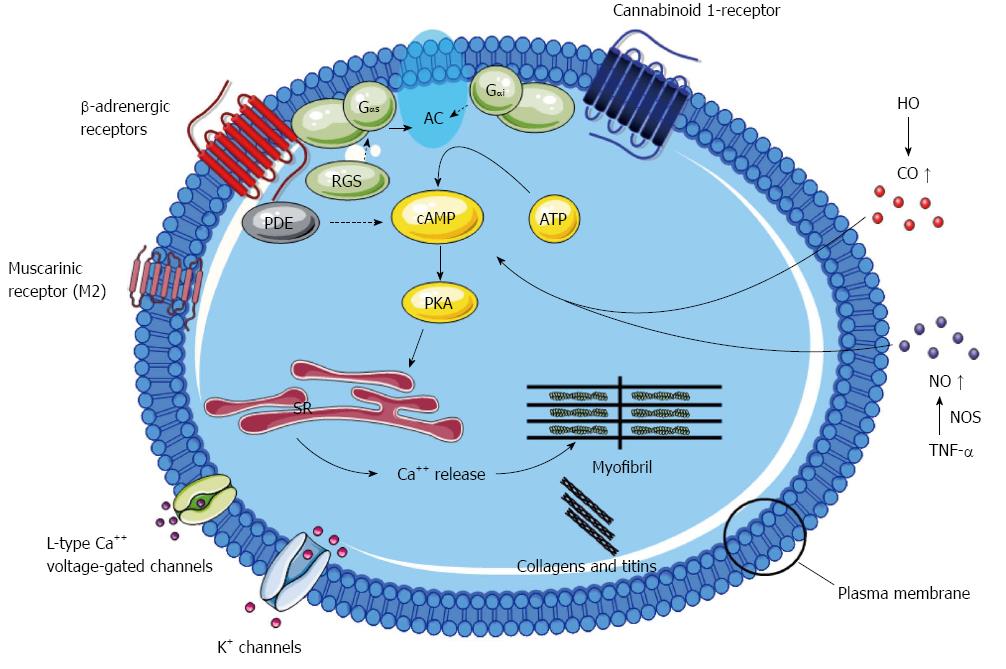Copyright
©2014 Baishideng Publishing Group Inc.
World J Gastroenterol. Nov 14, 2014; 20(42): 15499-15517
Published online Nov 14, 2014. doi: 10.3748/wjg.v20.i42.15499
Published online Nov 14, 2014. doi: 10.3748/wjg.v20.i42.15499
Figure 4 Mechanisms of cirrhotic cardiomyopathy.
The figure reviews the most important mechanisms involved in cirrhotic cardiomyopathy: Desensitisation and downregulation of β-adrenergic receptors with decreased content of G-protein (Gαi: inhibitory G protein; Gαs: stimulatory G protein) and following impaired intracellular signalling; alterations in particular in M2 muscarinic receptors; upregulation of cannabinoid 1-receptor stimulation; altered plasma membrane cholesterol/phospholipid ratio; increased inhibitory effects of haemooxygenase (HO), carbon monoxide (CO), nitric oxide (NO), and tumour necrosis factor-α (TNF-α); reduced density of potassium channels; changed function and fluxes through L-type calcium channels; altered ratio and function of collagens and titins. Many post-receptor effects are mediated by adenylcyclase (AC) inhibition or stimulation. PKA: Protein kinase A.
- Citation: Møller S, Henriksen JH, Bendtsen F. Extrahepatic complications to cirrhosis and portal hypertension: Haemodynamic and homeostatic aspects. World J Gastroenterol 2014; 20(42): 15499-15517
- URL: https://www.wjgnet.com/1007-9327/full/v20/i42/15499.htm
- DOI: https://dx.doi.org/10.3748/wjg.v20.i42.15499









